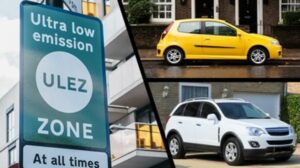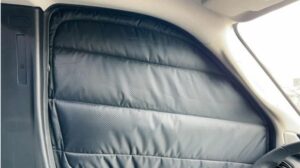Since most students receive instruction from driving schools or their parents prior to obtaining their driver’s license, many of them have a rudimentary understanding of safe driving practices. They might, however, be lacking in some areas or have some knowledge gaps that require reinforcement and additional instruction.
Given the prevalence of distractions such as smartphones and the allure of risky behaviors like speeding or tailgating, you may benefit from a refresher on good driving habits. If you’re a student, regardless of academic level, check out these good driving habits that you can add to your knowledge and ensure the longevity of your car.
Follow the manufacturer’s maintenance schedule
Whether you are a part-time truck driver or a subject expert who has bought a car with money earned from providing a professional essay writing service, you should adhere to the manufacturer’s maintenance schedule. This will ensure the longevity of your vehicle.
When you uphold the schedule outlined in your car’s manual, you ensure that vital components are inspected, serviced, and replaced at the appropriate time. As a result, you’ll prevent breakdowns and extend the lifespan of your car. Doing this is also a great way to preserve the resale value of your vehicle, which may be important if you’re a student who plans to sell or trade-in your car in the future. Remember, a well-maintained car retains its resale value better than the one that has been neglected.
Your safety should not be at risk, and you must comply with the maintenance plan provided by the factory. When your car is in good working condition, you are less likely to have an accident due to mechanical dysfunction.
Practice defensive driving
A few students might feel too sure about their driving skills, thinking that accidents only happen to others or that they can handle risky situations without a problem. This overconfidence can make them too relaxed and cause them not to pay attention to defensive driving techniques.
There are cases where students are influenced by their colleagues. In social situations, students may pressure each other to engage in certain risky driving behaviors to show off to their colleagues. For example, a learner may recommend that the driver over-speed to impress them.
Never forget that what you do while driving has an impact on other people’s lives and well-being. For this reason, it’s critical that students keep a safe following distance and anticipate possible hazards. Following traffic laws lowers the risk of incidents that could damage your car in addition to keeping you safe while driving. If you are a reckless driver, you might be considered a higher-risk customer by insurance providers, which would raise the cost of your policy.
Don’t Rev your engine
It’s common in college to see students revving a car as a way to demonstrate the car’s power and performance. It can also be an avenue to attract attention from other car enthusiasts or bystanders. But for most people, revving is all about the thrill and sense of excitement that is similar to the adrenaline rush experienced during high-speed driving or racing.
When the engine revs too high, the oil pump might have trouble sending enough lubrication to every part of the engine. This could mean there isn’t enough oil to reduce friction, which can make the engine get too hot and possibly cause serious damage.
Avoid putting too many things in your car
At the end of every school year, most college students face a difficult problem. They have very limited time, and they cannot simply put all of their belongings in a big box with the sign “dorm stuff”. Having decided to downsize, the students take only the most essential things with them, but still, the car they are traveling home in is way overloaded.
It is also worth mentioning that most students live in the dorms or share apartments with others, and often they do not have enough space to store their things. When the school year starts, they spend a lot of money purchasing the things to make their stay comfortable. The rest of the year, the purchased things keep lying around the apartment, and when it is time to move, the students are forced to take everything with them.
Students fail to realize that too much weight aboard strains your car’s drivetrain, suspension, and brakes, causing wear and decreasing fuel usage.
The best solution to avoid overloading is to start packing and organizing your belongings well in advance of the move to avoid last-minute scrambling. This allows time to assess the number of items to be transported and explore alternative transportation options if necessary. If your belongings cannot fit comfortably in your car, consider renting a larger vehicle, such as a van or a small moving truck. This way, you’ll be able to accommodate everything on a single trip.
Park in shaded areas
When students have a lot going on and many things to do, they might forget about the advantages of parking in shaded areas, especially if they’re not used to doing it. Sometimes, parking spots with shade might be farther from campus buildings or where they need to go. All these cases can make you choose to save time and convenience. As a result, you may opt for closer parking spots in sunny areas.
If you need to park after driving for several hours, do so in shaded areas. This action helps protect your car’s interior and exterior from the damaging effects of the sun and extreme heat. In the long run, you’ll be able to preserve upholstery, dashboard materials, and paint.
By parking in the shade, you’re also indirectly contributing to environmental conservation efforts. Reduced fuel consumption from less air conditioning usage means lower greenhouse gas emissions. This action helps to mitigate climate change and air pollution. Additionally, preserving your vehicle’s lifespan through shaded parking reduces the demand for new car production with environmental impacts associated with manufacturing and disposal.
Last words
Driving habits come from doing things over and over and being around other drivers. Some habits, like using your turn signal or looking in your mirrors, are easy to do regularly. But some like keeping a safe distance from the car ahead or being aware of dangers, need more attention.
Making good driving decisions fast needs time, practice, and work. Even though these habits might take a while to learn, you should keep doing them so that you can be a good driver. Also, regularly review your driving skills to make sure you’re being as safe as possible.






